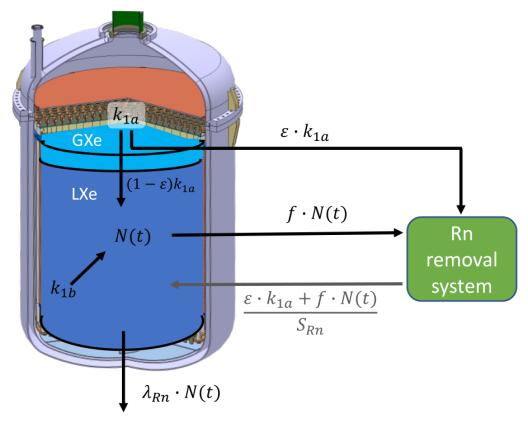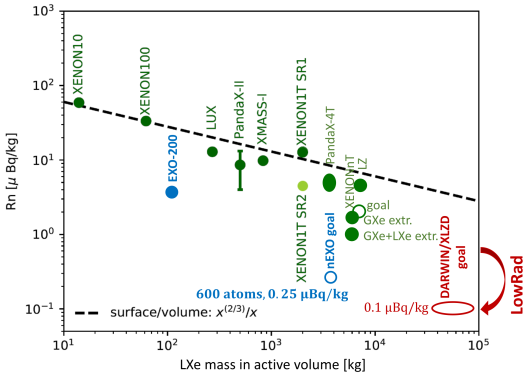
LowRAD (ERC Advanced Grant project 101055063)
Low radon and low internal radioactivity for dark matter and rare event xenon detector
PI: Christian Weinheimer
Motivation:
The astrophysical and cosmological evidence that the majority of matter in the universe must consist of exotic dark matter is overwhelming. But it is not yet clear what dark matter really is. Very promising candidates are WIMPs, the detection of which would also solve other pressing questions in particle physics. For the search for WIMPs, liquid xenon-based detectors are by far the most sensitive. The collaborations of the current dark matter experiments LZ and XENON and of the planned DARWIN experiment intend to join forces to build a next generation detector XLZD, with a sensitivity limited only by coherent elastic neutrino nucleus scattering (CEνNS). Such a detector will not only search for dark matter, but will become an observatory for rare event searches (axions, solar neutrinos, neutrinoless double beta decay, ..).


Challenges:
Despite construction in underground laboratories and with further shielding or veto systems for muons or neutrons, the sensitivity of these detectors is limited by radioactive decays within the xenon, especially of the radioactive noble gas isotopes 222Rn and 85Kr, dominating the background of current xenon-based dark matter experiments. In this project we want to push the possibilities of cryogenic online distillation (figure 1) to continuously reduce 222Rn and 85Kr to an unprecedented level of 1 atom per 100 mol of xenon (figure 2, 10 moles in case of 85Kr), which will make their background contributions at DARWIN/XLZD to be a factor 10 smaller than that of the unshieldable solar neutrinos.
Tasks:
- Develop Rn removal technology with radon-free components for a very high throughput of the order of 1t/h
→ need efficient use of cooling power: cryogenic heat pump - Prepare for continuous/often online Kr (and Ar) removal:
→ develop quasi lossless method (much less off gas) - Make use of the fact, that cryogenic distillation depletes the impurities on one output, but concentrates them on the other output
→ integrate very sensitive diagnostics - High flow cryogenic distillation and purification from electronegative impurities
→ integrate system in one together including calibration with radioactive noble gases and diagnostics - R&D for novel technologies
- Study of physics channel which profit from extremely low 222Rn and 85Kr backgrounds
